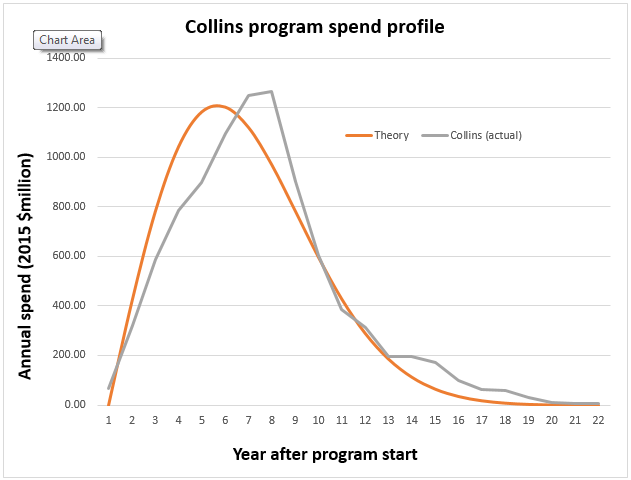Today I’m coming back to a subject long dear to me—the cost of the Future Submarine program. Long term followers of the subject might recall ASPI’s 2009 paper How to buy a submarine (PDF), which contained an estimated program cost of $36 billion. I thought it was important to have a stab at costing to inform the public discussion. It certainly did that; it made headlines at the time and then took on a life of its own, appearing in all sorts of comparative contexts for years afterwards. And it was contentious, with other analysts producing rival, and invariably lower, costings. The best credentialled of those was a Kokoda study (PDF) that produced a number around half of ASPI’s estimate.
The 2009 ASPI figure was based on historical trend data, rather than a detailed costing of the Navy’s requirements. That was unavoidable, given the lack of publicly available information at the time. All we knew was that the 2009 Defence White Paper had called for a submarine with better range, endurance and speed than the Collins class. I later described it as a requirement for a ‘conventionally powered nuclear submarine’. (Little did I know how close we would get to signing up for precisely that five years later.)
The Kokoda paper also based its calculation on historical data in reaching its significantly lower figure. While that seems confusing, in fact both approaches were valid, but based on different assumptions about the future submarines. ASPI’s number assumed a ‘revolutionary’ future design that represented a step change in capability, consistent with the White Paper description. The Kokoda figure costed an ‘evolutionary’ boat that was better than Collins by some measures, but of a similar design philosophy, and costing about the same. The historical data shows evidence of both phenomena, so which was right boiled down to what was ultimately demanded of the future boats.
A 2012 ASPI paper explained the differences thusly:
‘… there are many possible prices for the future submarine, and the actual cost will be determined by choices that are made about the boat’s capability and size. If the submarine is something less than the specifications in the [2009 Defence] white paper, the cost could be substantially lower [than $36 billion].’
For one brief shining moment back in 2014, it looked like we might land on an evolutionary approach after all. I think we missed an opportunity to scale back short-to-medium term capability ambitions to produce an enhanced submarine fleet at lower cost and, more importantly given the strategic circumstances we’re likely to find ourselves in, on a shorter timescale. But ultimately the government decided to pursue a ‘regionally superior submarine’. It’s not clear to me (or other commentators) what that means, when Australia’s boats will be rubbing shoulders with nuclear submarines from India, China, Russia and the United States, all with greater payload, endurance, range and top speed.
But what is clear is that our future boats won’t be cheap. The Integrated Investment Plan released with last year’s Defence White Paper gives a figure of ‘greater than $50 billion’ in then-year dollars. But given that the last of those dollars won’t be spent until around 2050, we need to put the cost in today’s dollars to understand where we are on the cost–capability spectrum. To do that, we need to be able to predict how much money will be spent each year during this complex program, for which most of the planning is under wraps. Luckily there are some cost-prediction tools available to help us. The most suitable for this calculation is the Norden–Rayleigh curve, a model for estimating the spend spread for development projects. Historical data (PDF, slide 7) for American development programs fits the model very well.
The graph below shows modelled spends compared with the actual spending data for the Collins program between 1985 and 2006. The fit isn’t perfect, but it’s pretty good, with a correlation of 95%. It’s certainly a lot better than assuming a constant spend rate. And it’s close enough to give us confidence that the model will give a reasonable estimate for the future submarine as well.

My calculations assume that the future submarine program will spend significant annual sums for 30 years, consistent with statements that the last boat will be delivered in the late 2040s. The table below shows the results, assuming an inflation rate averaging 2.5% over the period. We don’t know exactly how much Defence thinks it will spend, so I’ve done the calculation for 50, 55 and 60 billion future dollars.

At this point ASPI’s 2009 estimate of $36 billion is looking pretty good. In fact, we can turn the calculation around: if the $36 billion historical estimate is right, then the Norden–Rayleigh calculation suggest that Defence’s planning figure is close to $56 billion. But any way you cut it, we’re paying a lot for our hoped-for regional superiority.
Correction: a previous version of this article incorrectly referred to a ‘nuclear powered conventional submarine’ in the cited 2011 quote. The error was due to the author misquoting himself!

